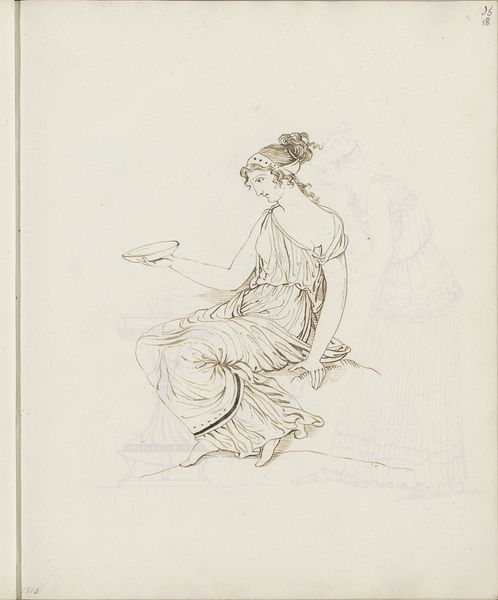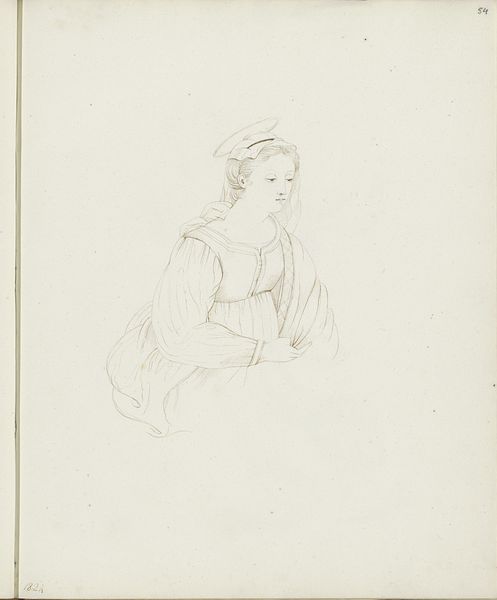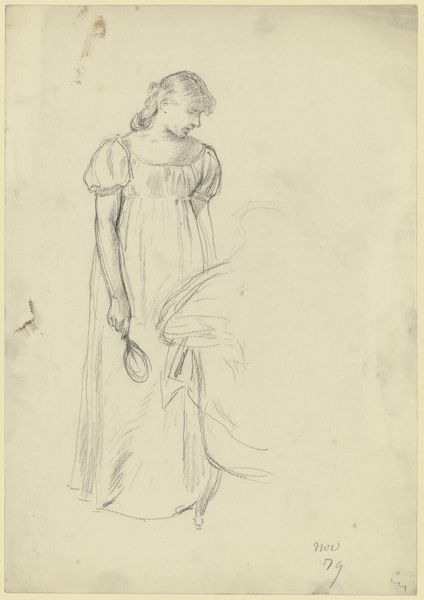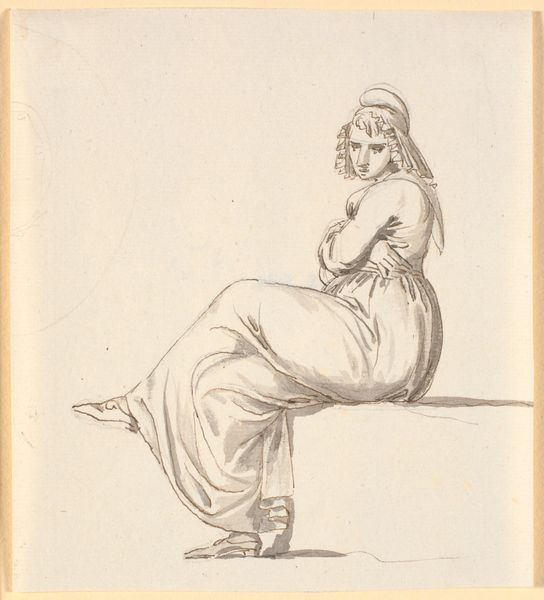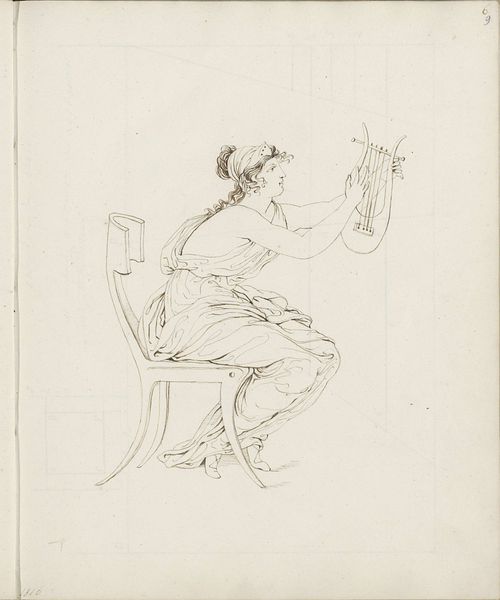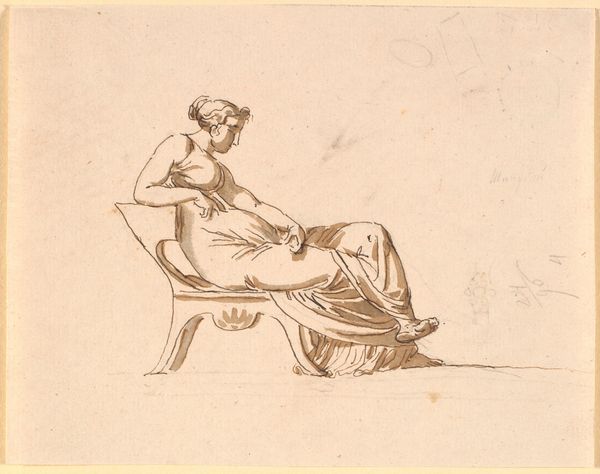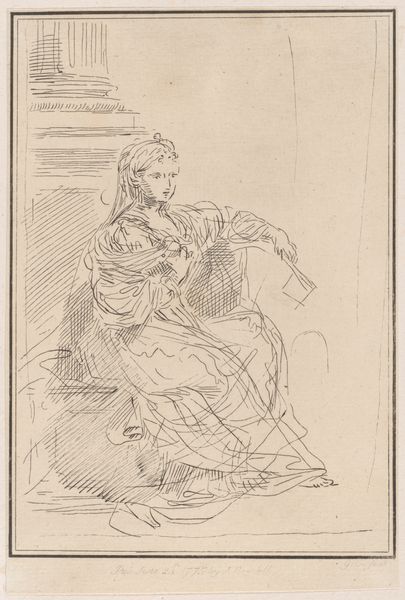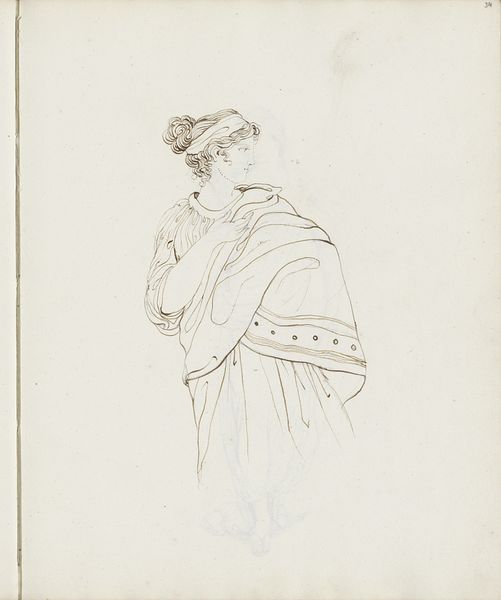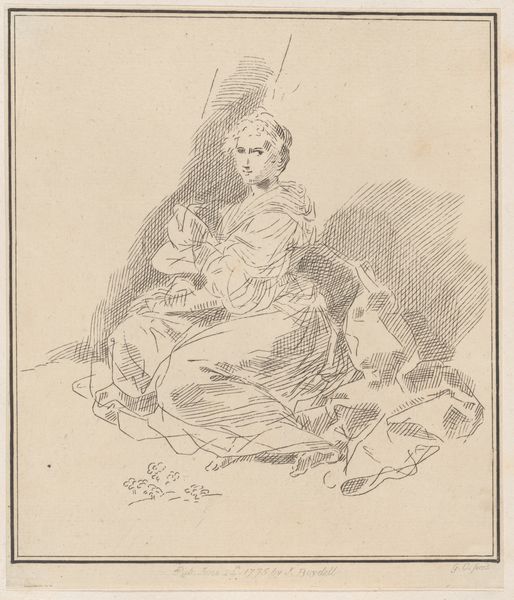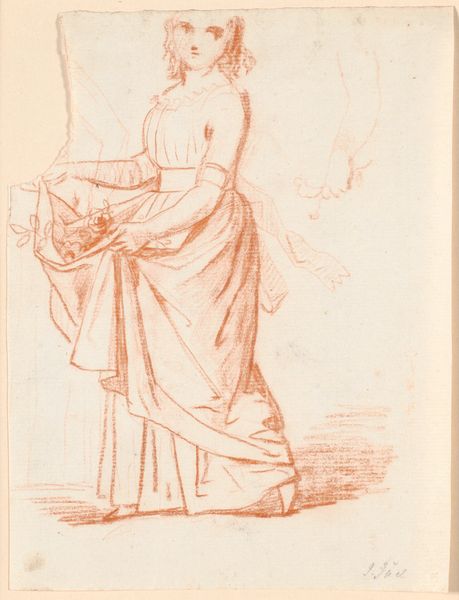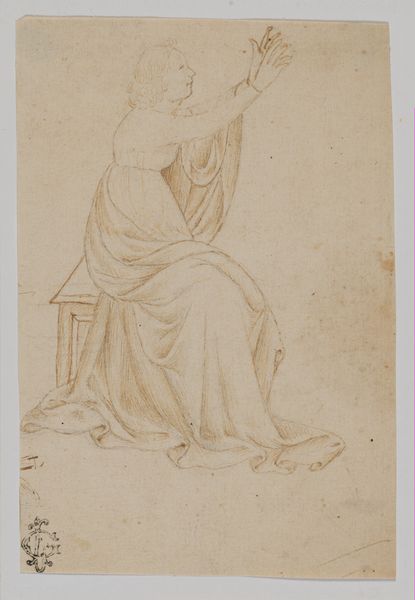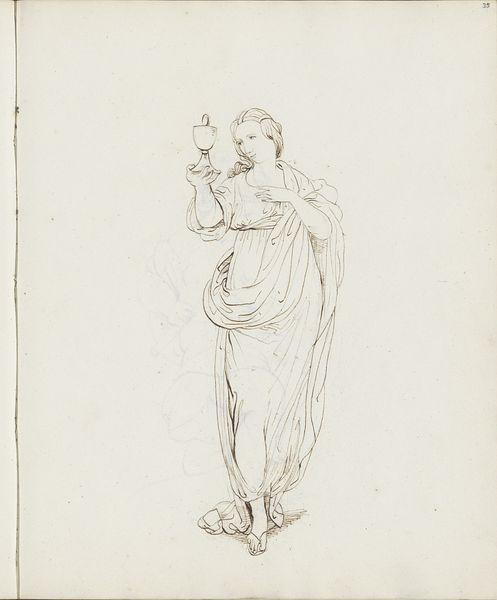
drawing, pencil
#
portrait
#
drawing
#
amateur sketch
#
neoclacissism
#
light pencil work
#
pencil sketch
#
figuration
#
personal sketchbook
#
idea generation sketch
#
ink drawing experimentation
#
pencil
#
line
#
sketchbook drawing
#
portrait drawing
#
pencil work
#
initial sketch
Copyright: Rijks Museum: Open Domain
Curator: Looking at "Seated Woman in a Mourning Attitude," a pencil drawing from 1821 by jonkvrouw Elisabeth Kemper, what strikes you most? Editor: An overwhelming feeling of lassitude. Her very posture speaks of weariness; it’s as if her own weight is too much to bear. The way her head rests on her hand—a classical gesture, certainly—but here it feels raw, unvarnished. Curator: Absolutely, and Kemper manages to convey this with such economical means. There's a Neoclassical air to the flowing drapery and the sitter's idealized features, echoing earlier artistic conventions. But then you notice the sketch-like quality, a sense of immediacy, that cuts through any idealization. The slight asymmetry, the unfinished areas—it suggests something much more intimate and personal. Editor: You know, those 'imperfections,' if you can even call them that, are where the power lies. It transforms her from a distant goddess to a woman caught in a moment of intense emotion. The chair, a symbol of authority and stability, becomes a mere prop, unable to offer solace. I’m immediately thinking about themes of mourning and personal grief—or the cultural symbols attached to suffering. Curator: It’s interesting how you latch onto those signs because, personally, it evokes a sense of the artist exploring an idea, not necessarily a definitive representation. Maybe it’s the inherent nature of a sketch that gives the drawing an ethereal quality. It exists between a thought and a fully formed piece. Editor: Perhaps, but even an initial thought can hold immense symbolic weight. Consider how the downcast eyes, a universal signifier of sorrow, connect us across time. And think about how the pose—hand supporting head—has been used for centuries to represent melancholy. Kemper taps into a deep well of cultural memory, intentional or not. Curator: A fascinating point. It highlights how even what we perceive as spontaneous and heartfelt expressions often have roots in visual traditions. Even while the artist might have been striving to capture something ephemeral, something in the here-and-now. Editor: And that tension—between personal experience and inherited visual language—is precisely what makes this sketch so compelling, isn’t it? Curator: Precisely!
Comments
No comments
Be the first to comment and join the conversation on the ultimate creative platform.
